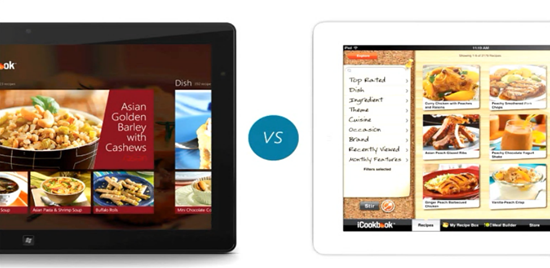Windows 8 Design is Calm
 Across the Microsoft platform we have Windows Client, Windows Phone, Windows Server, Microsoft Xbox, and Windows Embedded. Each exists to address a specific type of device and user scenario. But what’s great is that each participates in the Windows Design Language.
Across the Microsoft platform we have Windows Client, Windows Phone, Windows Server, Microsoft Xbox, and Windows Embedded. Each exists to address a specific type of device and user scenario. But what’s great is that each participates in the Windows Design Language.
What is the Windows Design Language?
The Windows Design Language is a set of principles that help designers and developers layout excellent apps and excellent user experiences. It drives consistency across apps and across the Microsoft platform. And, it is beautiful.
Note: The Windows Style varies from device type to device type. The Windows 8 style guide, for example, is only related to the Windows Phone style guide. It is not identical because the interface is distinct. Sometimes consistency is mistaken for uniformity. The flexibility within the Windows Style not only extends across device-types, but also to individual apps, letting developers innovate distinctive yet consistent apps.
Consider this image. It depicts four separate applications. Their UI is quite distinct. However, each of them has acute similarities that are prescribed by the Windows Design Language. In this case, specific to Windows 8, it is illustrating compliance to the Windows 8 Silhouette.
We once promote the “Metro Style”; a UI design template that got legs on Windows Phone. As a result we called Windows Phone apps “Metro-style apps”. For legal and practical reasons, we now refer to this as the Windows Style and Windows Store apps.
The Windows Style is the practical implementation of the Windows Design Language across the Microsoft platform. The only real “rule” is that the principles and general implementation be consistent – and they are.
The User Wins
Apple and Google are both copying our style. That’s the first compliment. Apple and Google are now synchronizing their own design languages across their platforms. That’s the ultimate compliment. They aren’t trying to look like Windows, they are even trying to be like Windows. Microsoft isn’t always the innovation leader. But in design, we are a head-and-shoulder ahead of the pack – for now. Cool.
In his talk titled “Design differences between iOS and Windows 8”, Bart Claeys discusses how his app iCookbook varies in look-and-feel between iOS and Windows 8. The differences are not trivial. And the differences really help unravel the core concepts of the Windows Design Language as he show he has implemented the Windows Style in his app.
One of my favorite parts of Bart’s presentation is a side-by-side visual comparison of his app. He discusses the controls and component differences. He discusses Windows 8 simplicity versus iOS skeumorphism . But then in the general look-and-feel he just says:
“At right [iOS] you there are a lot of things going on – a lot of navigation. And at left [Windows 8] it’s kind of calm and just your content.”
This simple differentiation between the design approaches helps underline why designers, in general, are drawn toward the Windows Design Language. It’s simple, fluid, and beautiful qualities create excellent applications and experiences. It is leading us to a new era of Modern UI.
Learn even more here!
Best of luck!
